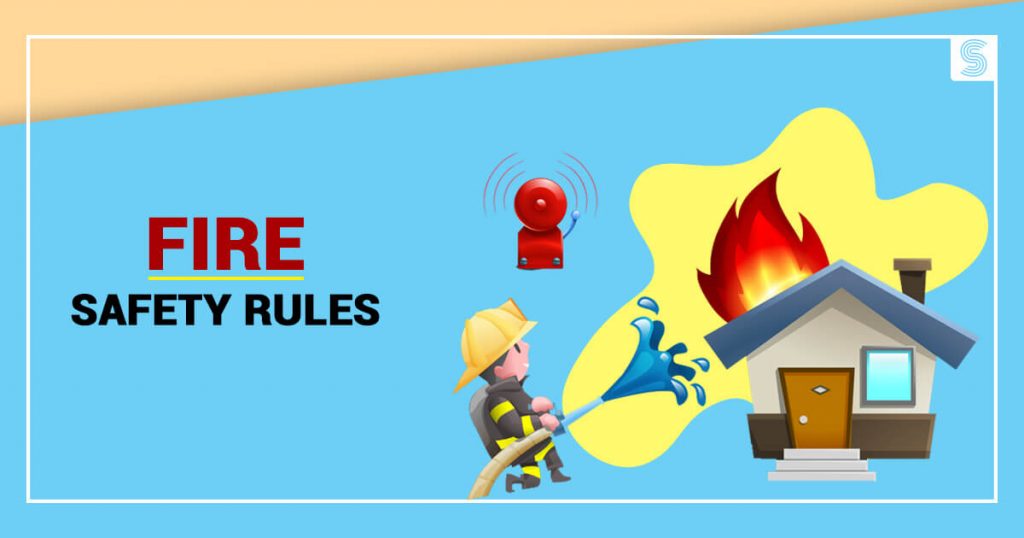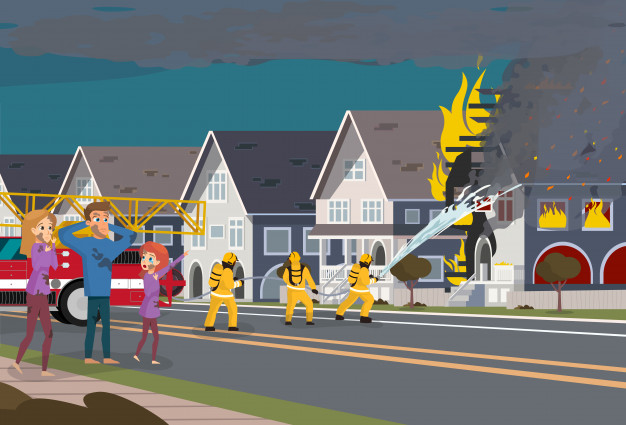Fire Safety Rules Made Mandatory by the Government of India

Dashmeet Kaur | Updated: Nov 01, 2019 | Category: Fire NOC
Lately, there have been many instances of fire outbreak in India, which raised a question on the safety and security of citizens. Fire can create a severe threat to the life of numerous residents and affect their occupancies. As per the reports of India Risk Survey (IRS), fire explosion is the third biggest risk to the business operations. The outbreak of fire not only becomes the reason for the loss of precious lives but also inflicts massive property loss. To circumvent from the harsh impacts of fire, one needs to imply the fire safety rules issued by the Government of India.
Since from the past two decades, significant growth is apparent in the high rise buildings; one can expect a fire accident in the same. The fire in a residential area, particularly in high-rise buildings is even more complicated wherein, the rescue operations are more difficult and sometimes also lead to many deaths. A rapid increase in buildings and Indian industry has worsened the current scenario in terms of fire incidents. Considering the adversity of fire, it’s the need of the hour to spread awareness about fire safety NOC. This article will provide you with the glimpses of the existing fire safety rules and regulation in India. Moreover, it will give the efficacy of these regulations for preventing potential fire hazards.
Table of Contents
History of Fire Services
The fire services fall under the provisions of Article 243W Twelfth Schedule in the Constitution of India [1] . The functions registered in the Twelfth Schedule focus on the performance of Municipalities. Peek into the history of fire services from the time it got established until today:
- The regular fire service in India was brought into existence about 215 years back. Firstly, the service got set up in Bombay (1803), succeedingly in Calcutta (1822) then in Delhi(1867) and lastly in Madras (1908).
- According to the report released in 1997 by the Ministry of Home Affairs, there were approximately 1754 fire stations with 5149 fire vehicles/ appliances, and 50,730 fire professionals were functioning in PAN India.
- Furthermore, about 278 trailer-made fire stations were exclusively running in the industrial realm in 1997.
- As per the Annual Report (2009-2010) of Ministry of Home Affairs, in the year 2009, the Centrally Sponsored Scheme on reinforcing the Fire and Emergency Services in India got an approved by the Government. The estimated cost for the same was set up to Rs.200 crore during the Eleventh Plan Period, where the State Government contributed a share of Rs.40.23 crore.
- The objective behind the Scheme was to strengthen the services of fire and emergency in our country and progressively revamp it into Multi-Hazard Response Force, efficient in acting as the first responder in an emergency case.
- The Centrally Sponsered Scheme also provided additional 277 Advanced Fire Tenders, 573 Quick Response Team Vehicles, 1,146 Combi Tools for Rescue, and 1,146 High Pressure Pumps with Water Mist Technology at District Headquarter Fire Brigades.
- To discover the exact requirement of rescue and firefighting equipment, the Ministry of Home Affairs decided to implement a Fire Risk and Hazard Analysis in India.
- Recently, fire prevention and firefighting service providers expressed the poor condition of fire brigades in India. They inform about the poor state of tools by saying that they are ill-equipped and unorganized.
- The National Building Code (NBC) in India states on matters of building construction and fire safety. As per the code, fire prevention and fire protection is a subject of the state. The key responsibility for fire protection and fire prevention lies on the shoulders of the State Government.
- The fire safety rules for the prevention and protection will set in the form of Municipal By-Laws or State Regulations.
Fire Safety Rules- Compliance by the Indian Government
Several high-rise builders and contractors were founded to disregard the fire safety rules. Besides that, even the occupiers do not perform their duty of regular maintenance of the fire prevention systems installed in their homes or offices.
Although the Fire Safety Audit is known to be an efficient tool for the assessment of fire safety standards in an occupancy, however, there are no provisions for fire safety legislation in India concerning the objectives, scope, methodology, and periodicity of the Fire Safety Audit.
The NBC took a stern step in 2016 by suggesting a periodical fire safety inspection by the personnel residents of the buildings to assure fire safety standards. Whereas, for commercial buildings, the statutory authorities like State Factory Inspectorate, assert for Fire Safety Audit through different external agencies, based on the nature of the materials and activities executed in the building.
The provisions issued by the Maharashtra Fire Prevention and Life Safety Measures Rules, 2009, were formed under the Maharashtra Fire Prevention and Life Safety Measures Act, 2016. Following is the list of fire safety rules which the Government has made mandatory for building owners:
- As per the new norms, the residents need to conduct Fire Safety Audits in every half-yearly and submit its report to the regulated fire department.
- Hazard Identification & Risk Assessment (HIRA) shall focus on identifying potential hazards.
- A comprehensive Fire Safety Audit will address the inherent fire hazards of the daily activities in occupancy and shall recommend fire measures to reduce them.
- Each Municipal Corporation having a population of more than 1 million must put in a fire hazard response and prevention plan for their respective jurisdictions.
- 13th Finance commission recommendation on fire safety must get implemented.
- A part of the grant allocated by the commission to the Urban Local Bodies (ULBs) must get utilized on refurbishing the Fire services in their jurisdiction.
- The Urban Local Bodies (ULBs) shall provide financial support to State Fire Services Department.
To reduce the rate of fire incidents in our country, the Fire Safety Audit must be made mandatory across India, and the audit work should be entrusted to professional Third Party Agencies. As prevention is better than cure, the only way to get successful fire prevention is by the active cooperation from all sectors, whether commercial or residential.
Also, Read:Procedure for obtaining Fire NOC in India












